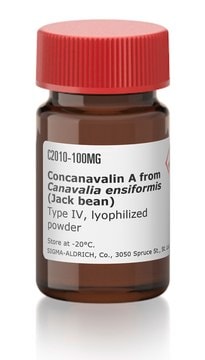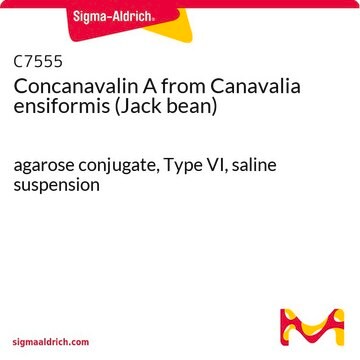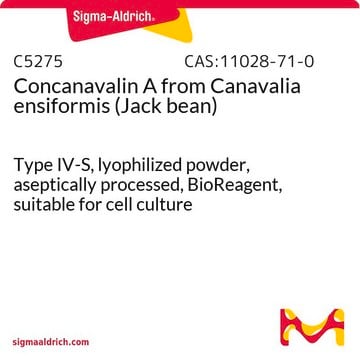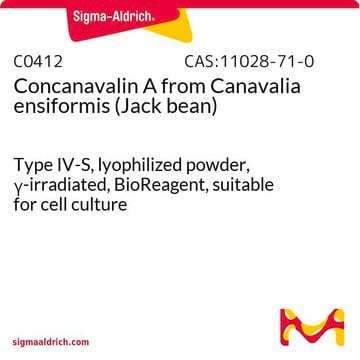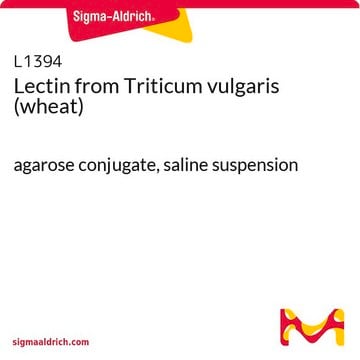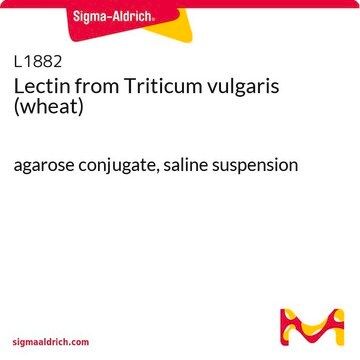C9017
Concanavalin A from Canavalia ensiformis (Jack bean)
Sepharose™ conjugate, buffered aqueous suspension
Synonym(s):
ConA
About This Item
Recommended Products
biological source
Canavalia ensiformis
conjugate
Sepharose™ conjugate
form
buffered aqueous suspension
contains
20% ethanol as preservative
extent of labeling
10-16 mg per mL
matrix
Sepharose 4B
matrix activation
cyanogen bromide
matrix attachment
amino
matrix spacer
1 atom
capacity
≥25 mg/mL binding capacity (thyroglobulin)
storage temp.
2-8°C
Looking for similar products? Visit Product Comparison Guide
Related Categories
Application
Biochem/physiol Actions
Physical form
Analysis Note
Legal Information
related product
Signal Word
Danger
Hazard Statements
Precautionary Statements
Hazard Classifications
Repr. 2 - Resp. Sens. 1 - Skin Sens. 1
Storage Class Code
3 - Flammable liquids
WGK
WGK 3
Flash Point(F)
102.2 °F
Flash Point(C)
39 °C
Certificates of Analysis (COA)
Search for Certificates of Analysis (COA) by entering the products Lot/Batch Number. Lot and Batch Numbers can be found on a product’s label following the words ‘Lot’ or ‘Batch’.
Already Own This Product?
Find documentation for the products that you have recently purchased in the Document Library.
Customers Also Viewed
Our team of scientists has experience in all areas of research including Life Science, Material Science, Chemical Synthesis, Chromatography, Analytical and many others.
Contact Technical Service